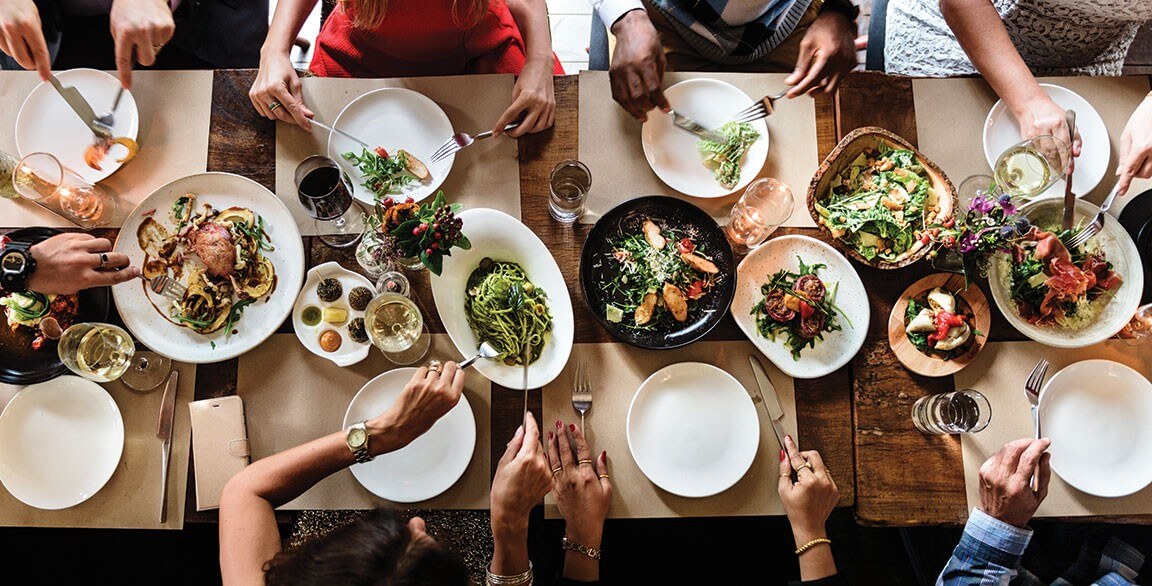
When it comes to consumer demographics, foodservice has tended to view different age cohorts in a segmented way. Rather than paying attention to the broadest markets, the focus has been squarely on Millennials—followed by Gen Z—with other generations left behind or left to fend for themselves in a food landscape that increasingly sees them as less relevant.
How realistic is a strategy that excludes or ignores a large share of the population? The answer is not very. In an increasingly competitive landscape, foodservice operators need to create spaces and menus that appeal to a broad array of consumers. Conversations around appeal of flavors, foods or formats suggest there is no intersection around which an operator may work.
Furthermore, Millennials and Gen Z are known for the emphasis they put on experiences—this can exclude the more comfortable atmosphere favored by many older consumers.
Operators need to find ways, within the boundaries of their brands, to appeal to and draw consumers across generations to ensure the strongest possible competitive position. What follows are six points to consider when strategizing around cross-generational objectives.
Reverse Migration
Conventional demographic wisdom has held that cities are the bastions of the young, while the suburbs and rural areas are primarily where older consumers moved or stayed. Conversely, younger consumers flocked to urban areas only to shift out to the suburbs and rural areas when the time was right (read: when they get too old for the city or they start families). This is no longer strictly the status quo. In fact, demographic trends suggest a shift in these long-held beliefs, and this shift will force operators in urban, suburban and rural areas to rethink their strategies going forward.
Boomers, particularly those who are more affluent, are trading in suburban life for urban living. These consumers can afford the higher cost of living in cities and are looking for a lifestyle that’s more manageable: no lawns, easily walkable, with plenty to do. On the flip side, younger consumers are struggling to afford city living and many are looking for a stronger connection to the earth or outdoor spaces.
Urban restaurants will be faced with both a declining younger population and a growing older population. In the suburbs, the opposite will be true with more younger consumers—both with and without children—seeking respite from the congestion and expense of the city, but not willing to sacrifice on quality, convenience or variety. Operators in both areas need to be prepared for the shifts to endure for the long term.
Boomer Benefits
Though much of the industry has focused on younger consumers, which is understandable based on their size and potential spending power, Boomers offer operators stability that is often lacking with younger patrons.
Consider, for a moment, that Boomers are the most affluent generation ever to retire. These consumers cannot only afford urban prices but generally have more money to spend than younger consumers.
Furthermore, older consumers are typically more loyal than are younger consumers, particularly compared with Millennials. These consumers will not only come back repeatedly, but, in urban areas, may even be your most frequent visitors. Additionally, Boomers are very likely to tip better—particularly for staff that recognizes them as regulars and treats them accordingly—and may spend more per visit.
The Food Hall Paradigm
Consider the ongoing success and proliferation of food halls. These concepts have created spaces that draw in a variety of consumers from a diverse set of demographics. Food halls are the modern equivalent of the never-ending menus of the ’80s, in which operators sought to appeal to nearly everyone. Food halls succeed because the focus is on quality as much as variety—and the breadth of concepts featured in these food halls is sure to create a “something-for- everyone” environment. Additionally, each stall or vendor has a unique feel, adding personality to the entire venue.
What can be learned from food halls? The objective should not be to expand menus to the breaking point in the hopes of eliminating the veto vote. This is not feasible given operation complexity, labor and ingredient costs. Rather, restaurants should take notice of the ways in which food halls create unique spaces and offerings that maintain high quality but offer diverse experiences, from food to atmosphere, connecting a disparate group of vendors, backgrounds and age groups in a setting that makes everyone feel welcome and appreciated.
The Coffeehouse Vibe
It’s often assumed that younger consumers only want to hang out in places with other younger consumers, and vice versa for the older among us. There is, however, little evidence that this is the case. In fact, operations that attract a broad cross section of consumers can have some of the most.
Consider local or chain coffeehouses that draw in consumers from diverse backgrounds and across multiple generations, keeping them there for long periods of time. A large part of the appeal of these operations is the confluence of so many individuals from different backgrounds and age groups in a setting that makes everyone feel welcome and appreciated.
Curating Vs. Expanding Menus
The goal in appealing to multiple generations is not to create such complex and unwieldy menus that operational efficiency as well as labor and food costs become unmanageable, but rather to broaden the reach and appeal of the menu to capture—and maintain—the largest possible patron set. A carefully curated menu can incorporate options that appeal to Boomers who are more risk-averse and seek familiarity and comfort, as well as younger consumers who are looking for new experiences.
Consider creating base elements that focus on familiar flavors, ingredients and formats upon which more unique elements can be layered or added. The familiar bases can capture older consumers, while the layered or customizable elements can encourage safe experimentation to radically new experiences across a broad swath of consumers.
At no time should an operator make changes solely to appeal to any demographic group if that change skews away from brand identity.
Experiences within the Space
Larger brands can leverage their footprints to create a host of experiences within their concepts. In theory, the designs can focus on the different experiences that various generations may be seeking—upbeat and dynamic for younger consumers, comfortable and relaxing for older consumers.
But, in reality, accommodating a variety of needs makes an operation more relevant for a larger amount of parties. This does not necessarily require radical remodeling, but rather a careful consideration of how the space can be effectively used. The most obvious is a bar versus dining room vibe—but not so segmented that parties in each group feel cut off. Here, inspiration can be drawn from the active public spaces in innovative hotels that are creating unique spaces within larger common areas to accommodate everything from social gatherings to quiet business meetings, while still allowing for a broader experience in a dynamic open space. Sound, seating and hardscapes are techniques that can create rooms within the room.
Staying True to the Brand
Operators must always remember that any solution should maintain the integrity and strength of the brand and strategic focus of the operation. At no time should an operator make changes solely to appeal to any demographic group if that change skews away from brand identity. Those changes ultimately weaken the brand and will create issues in drawing any demographic, putting the operation in a precarious competitive positioning. At all times, the integrity of the brand must be maintained to ensure patrons of any generation understand the operation’s values, offerings, and atmosphere.
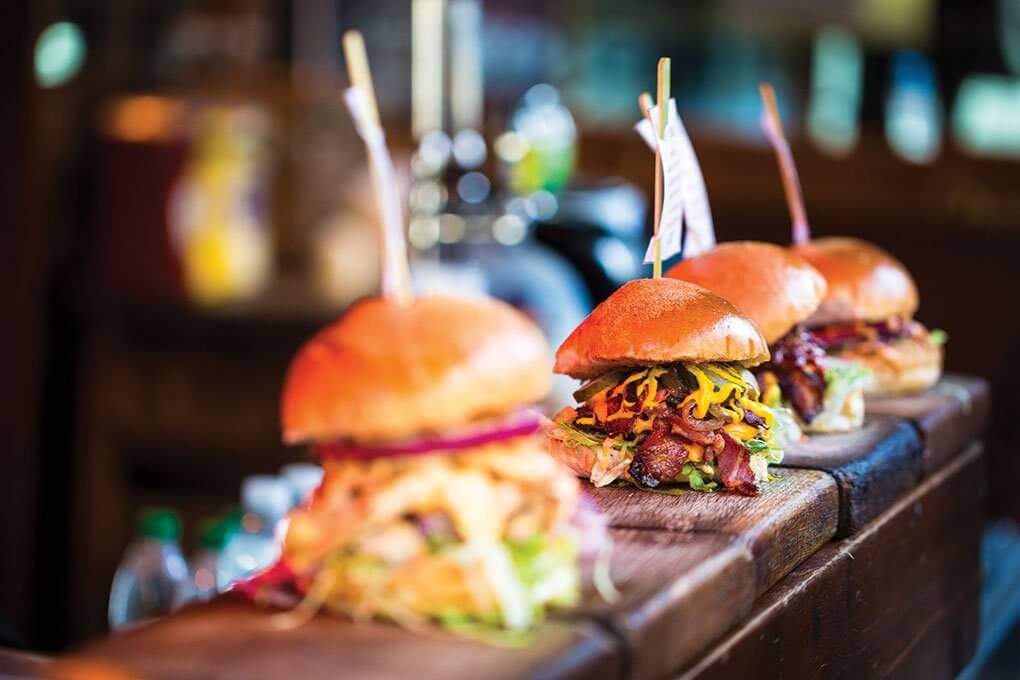
Appeal to more demographics by combining familiar menu items with a sense of adventure.

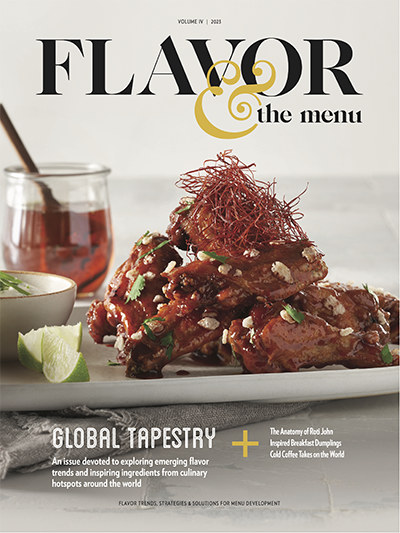


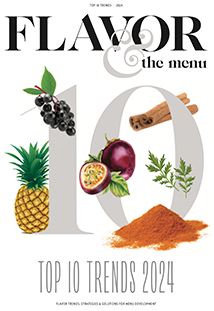
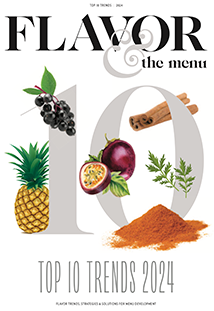


 From the July-August 2019 issue of Flavor & The Menu magazine
From the July-August 2019 issue of Flavor & The Menu magazine